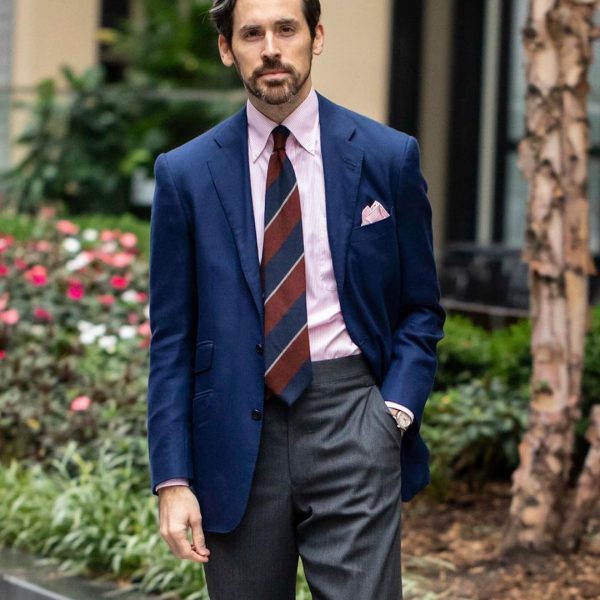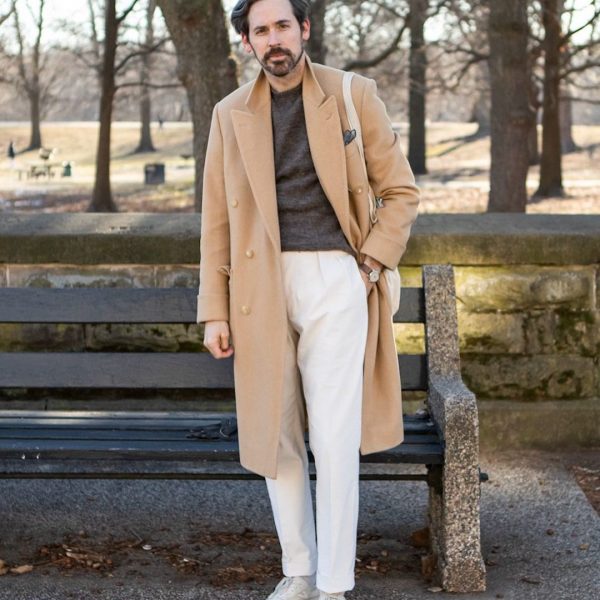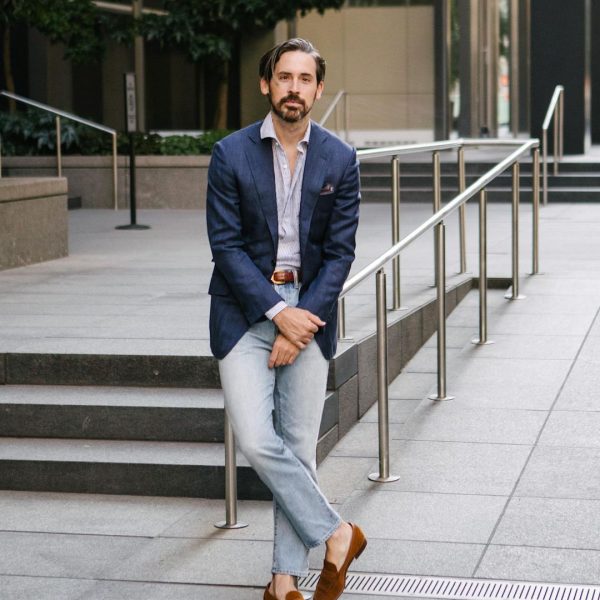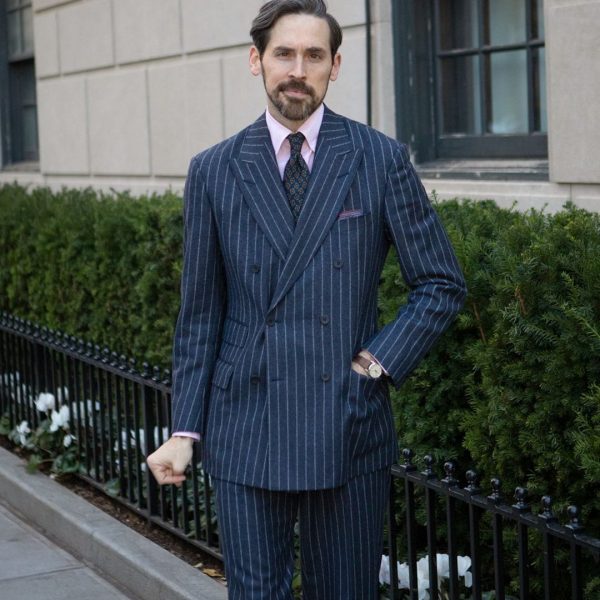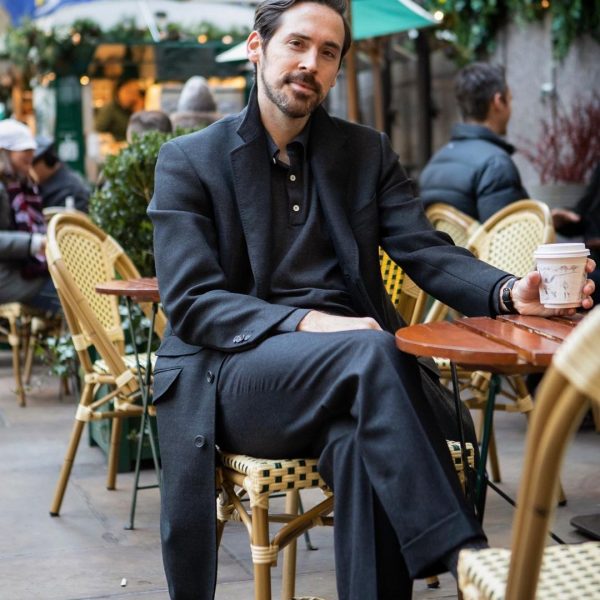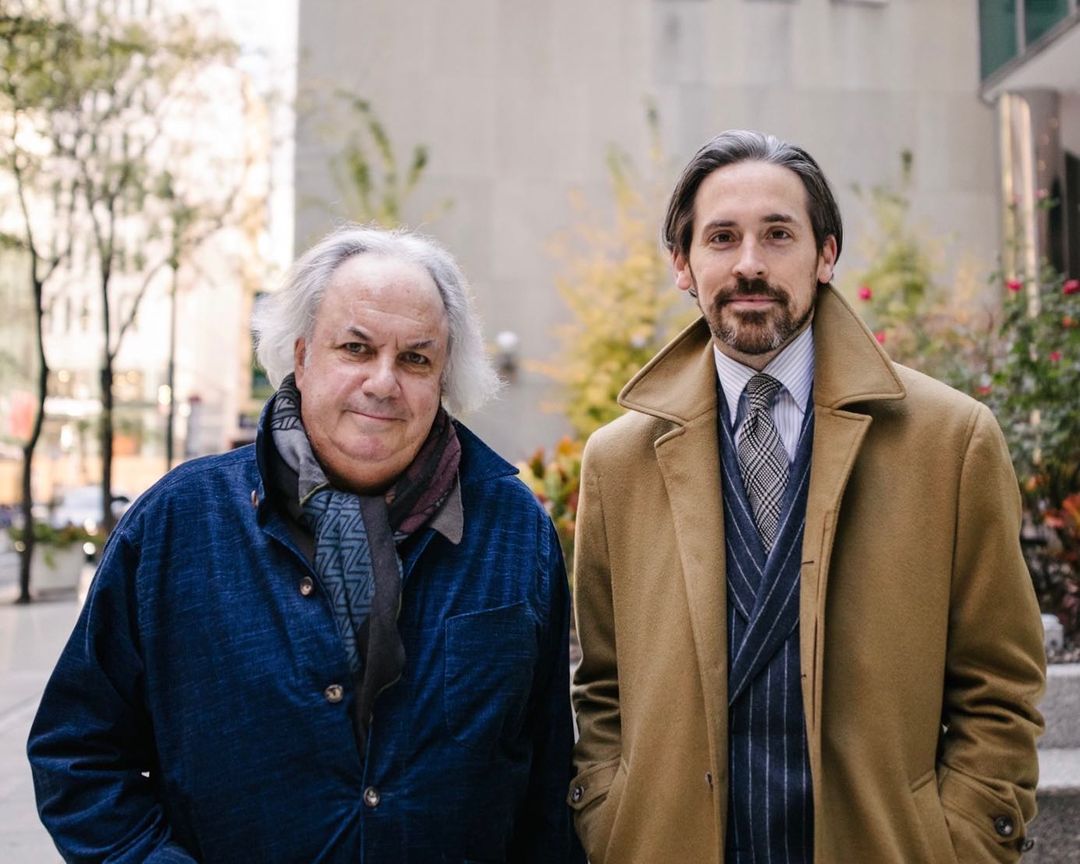
As the author of what many regard to be the Bible of menswear, Dressing the Man, and the owner of a 35-year-old custom tailoring business, Alan Flusser has more than left his mark. Over the course of his career, he has dressed many of Hollywood’s most iconic and stylish characters — Gordon Gekko (Michael Douglas) in Wall Street, Patrick Bateman (Christian Bale) in American Psycho, and Lt. Col. Frank Slade (Al Pacino) in Scent of a Woman. Beyond Dressing the Man, his books Style and the Man and Clothes and the Man are widely considered indispensable and insightful guides for the well-dressed. In 2019, he also published a book on America’s most impactful designer, Ralph Lauren, as part of a celebration of the company’s 50th anniversary. Simply put, Flusser is a legend in the menswear industry.
But even legends retire.
Announced on December 8th, 2020, Alan Flusser Custom will now be led by former Operations and Production Manager (2013–2016) and Director (2016–2020), Jonathan Sigmon. Put This On caught up with both Flusser and Sigmon to discuss the future of Alan Flusser Custom, the current state of American style, and what the future for menswear might be in a COVID haunted world.
You have had some pretty famous clients throughout the years, both in the real world and the world of fiction. After all of your years of service, have you seen any commonality between your clients?
ALAN: I am going to guess that at some point, retaining such clientele over the years was a function of the kind of knowledge and experience we were able to share with them. We have always prided ourselves on what we know. When coupled with our cloth and tailoring recommendations, the upshot translated into the kind of stylish individuality that clients found appealing, but had previously eluded them.
The shop was always a bit different from other tailoring institutions because of my background. Having grown up in relatively privileged circumstances, attended private schools, traveled, and lived a similar lifestyle, I had an unusual camaraderie with our clientele. Invited to lunch at a man’s golf club or a first-time black-tie dinner at a fiance’s home, I’m familiar with the expectations of such function-driven attire.
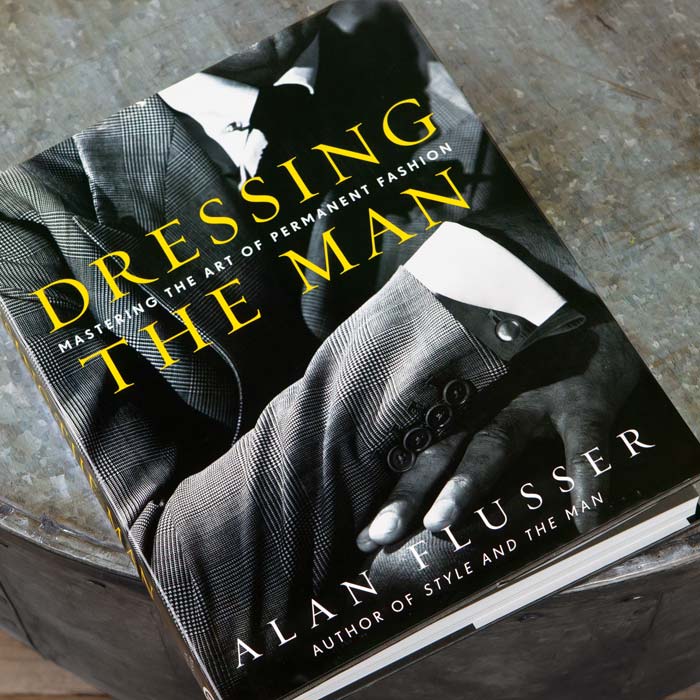
I suppose my books are another draw. Perhaps my writing gave a prospective client some comfort knowing he was engaging with a firm that has a reputation for expertise. Of course, having the movie Wall Street debut on the heels of the company’s start-up didn’t hurt; it was like being shot out of a sartorial canon for all to see. Would-be clients showed up from all corners of the globe wanting to look like Michael Douglas. As the movie’s stature as an iconic menswear film grew over time, the shop became its ongoing and principal beneficiary. I often reference the film as fulfilling the firm’s promise that everything we make is intended to bestow its owner a minimum of twenty years of stylish wear.
Jonathan, how did you come to Alan Flusser Custom?
JONATHAN: After spending a few years working in enterprise software, I was fortunate to get my start in the menswear industry at Suitsupply, helping start the US buying team. At the time, there was only one US store, in SOHO in NYC, and it was a pretty exciting time as they were launching several new stores per year. A former Suitsupply colleague wound up as the sales manager for Alan Flusser Custom, and he suggested that Alan bring me over to run the operations side. After a few years of getting the back end running more smoothly, it was a pretty natural progression to move over to the client-side, and then on to running the shop.
What was it like discussing taking ownership of Alan Flusser? How did that dialogue and process begin?
JONATHAN: Alan has been interested in stepping down for a while, but he always wanted the brand to continue and, of course, needed to be comfortable handing the reins over to someone. It was a pretty natural development in our relationship and for the business. We’ve discussed it extensively over the last couple of years, and this past Fall, the time was right. Operationally speaking, it hasn’t been terribly different as I’ve largely run the shop for several years, but it has certainly brought a new weight and sense of responsibility.
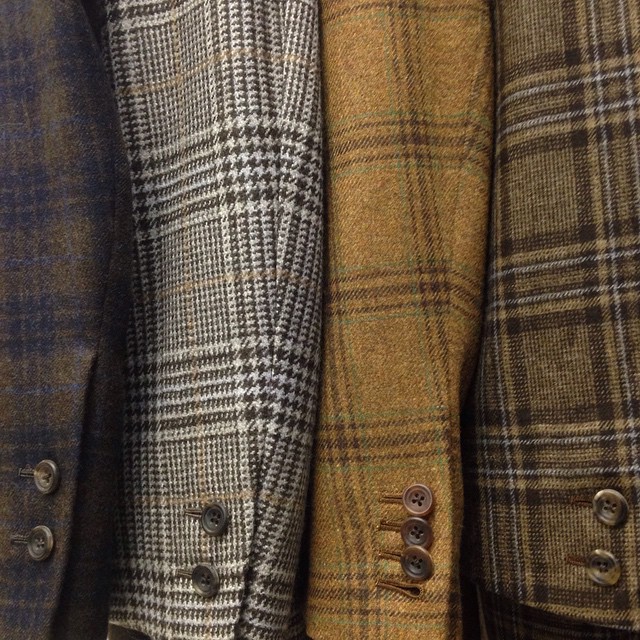
Out of all the areas you seem to be stressing, made-to-measure (MTM) appears to be where you are driving the business. Why is this?
JONATHAN: I consider our made-to-measure a particularly compelling offering, as few people in New York are providing an MTM product and service at a comparable level. It’s a kind of niche middle-ground between a lot of lower-end MTM brands and significantly more expensive bespoke clothing. The key elements are a great design, wise counsel, a highly adaptable pattern, and a critical eye on the finished product. The most common thing we hear from our new MTM clients is that they’re building their wardrobe and want to be sure they’re approaching it smartly. Proper guidance on proportion, color, cloth, and design for longevity is essential, and we’re glad people trust us to teach them what they look good in and why. Having focused primarily on custom clothes for the bulk of the 35-year business, we’re in the habit of looking very critically at the fit of everything we make. We view our MTM clothes the same way, and if the fit of the garment isn’t right, we’ll take it apart and put it back together to get it the way we want it. We also have three tailors on staff. They mostly work on our in-house clothes, but having them on staff gives us greater flexibility and control when it comes to the alterations and finishing of our MTM.
Frankly, within a rough price range, say $1,800-$2,800 for an MTM two-piece suit, the quality of the make will be relatively similar across the board. A garment at that level should be constructed from fabrics made by the most reputable mills. There is usually a fair amount of handwork in areas such as the collar, armhole, and pick stitching along the lapels and pockets. The differences among shops at this level are far more around the clothes’ design and silhouette, the level of guidance and taste of the clothier, and the attention to detail in fitting and finishing.
A question for both of you. When people think of Alan Flusser, they often think of the textbook ‘American style.’ Yet some people might be surprised (or even disappointed) to learn that a lot of the clothing is made in China. To skeptics, critics, or just the curious, how would you respond about the usage of offshore tailoring?
ALAN: First of all, I think you mistake personal style with a place of origin. Making something in America does not guarantee a higher probability of genuine stylishness. Conversely, making something in China does not automatically condemn the product to an inferior stylishness.
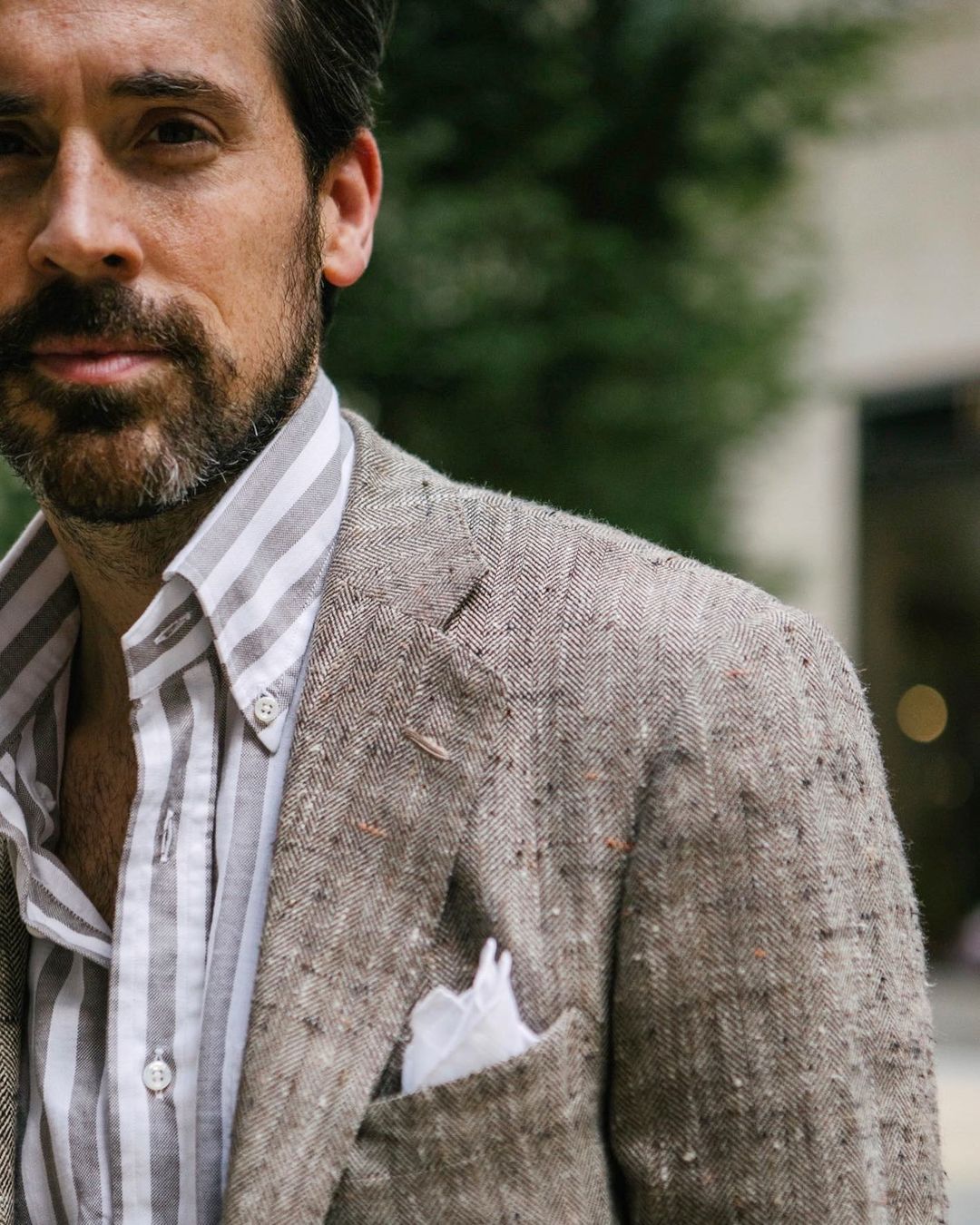
Personal style, or even fashion longevity, is a function of two larger propositions: the relationship between a particular garment’s proportion and color in relation to the wearer’s complexion and physique. And secondly, style is what comes from inside you, not what covers you. You can have the most astonishing wardrobe. However, if you are egocentric and pompous, no amount of tailoring can compensate.
The only thing that would disappoint me is if we were to create something for a client who then found it unflattering and thus of reduced usefulness to him. Such a subject has more to do with a product’s design and taste than its country of origin. I’ve found clothes hand-tailored in Italy or Great Britain to be less well made and appealing than some better designed and hand-tailored clothing in Japan or China.
We have spent almost five years training a Chinese factory on how to make a garment that could pass our standards for quality, finish, and expression. The biggest benefit of our MTM is that we are now able to expand the number of people who can afford our clothes, which means that more men will now be able to learn from our unique thought-process.
Fortunately, the Chinese have long had fine tailoring skills that were handed down from Colonial times to Hong Kong British tailors. However, they lacked some of the nuances seen in high-end tailoring. But over the past twenty years, the country has played host to Europe’s finest custom tailors and clothing manufacturers, and they’ve learned from their experience and tailoring skills. If anyone remains skeptical, we invite them to visit us and select from our curated range of Huddersfield and Biella fabrics and enjoy the same measuring, fitting, and finishing process that we undertake with every client these past thirty-five years.
JONATHAN: When the critique is about not manufacturing in America, I empathize with that and even share that concern. I am proud of the custom and bespoke work that we do in NYC, and I cheer when folks like my friend Justin Christensen at Hertling make such concerted efforts to save and even grow American manufacturing. Unfortunately for our rather specific needs, we are not able to make the quality of products we want to offer, at our price point, with the American factories that do this specific kind of individualized tailoring. Six or seven years ago, we had to leave the American factory that was within the right price range because of their inability to make our MTM garments to our standards consistently. That was disappointing, but our desire to make everything in America cannot override our commitment to deliver clothing up to our standards.
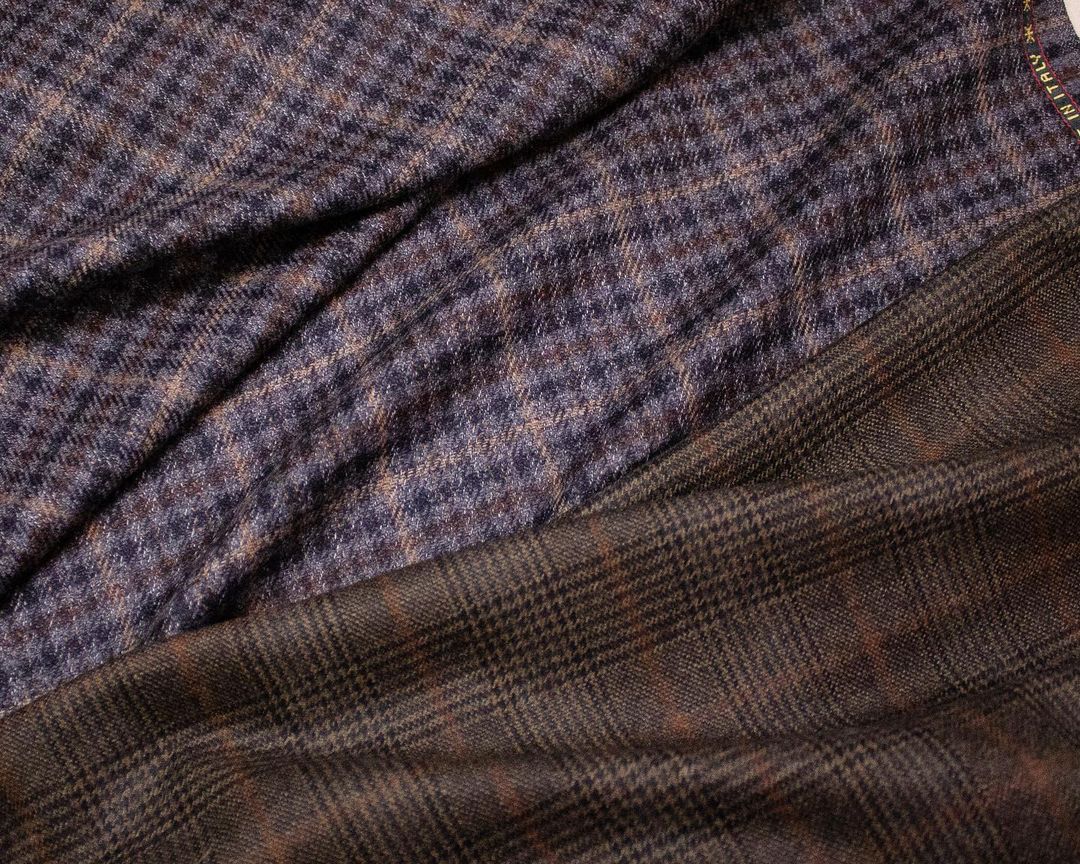
When the critique is about producing in China or elsewhere in Asia, as opposed to a European country, I consider that a rather tired argument at this point, waged primarily by folks who don’t understand the industry. We work closely with a larger factory and a more boutique workshop in Tianjin. I’ll put the quality of our clothes from both partners against any European MTM facility any day. The workmanship, fit results, quality control, and service are exceptional. Perhaps preempting more pointed but mistaken critiques, the margins are irrelevant to the decision, as the way we make our MTM clothes now is more expensive than the program we previously offered through our American factory. Our aim in production is to make the best garments we can within our price structure and with respect-worthy partners regardless of geographical origin.
Thanks to COVID-19, places like Huntsman and other bespoke tailors have started to adopt virtual consultations with their clients. The feedback seems to be mixed. What has been your experience during COVID-19? Do you think virtual consultations are here to stay, or will things revert to emphasizing the in-store experience?
JONATHAN: We’ve also been doing virtual fittings to some extent. Given the state of the world, the reality is that many companies in this industry would not survive without virtual fittings. The majority of our local clients are not currently living in NYC, and our out-of-state clients are certainly not traveling here. For folks who have an existing pattern, it’s a pretty seamless process. Frankly, the most difficult things are getting the lighting right to see the garment accurately, and guiding the client who is trying to pin the fronts of their own jacket together for the fitting; that can be a rather comical process at times. (We should figure out how to make that easier). There will always be some things you can’t see in a virtual fitting. We make sure people understand that it won’t be perfect, but it should be very wearable until we eventually see them again for nips and tucks. For certain out-of-state clients, I expect they’ll want to continue this route as they’re now accommodated to getting their clothes delivered more quickly. But others will default back to their routine of in-person fittings during their periodic NYC visits.
It’s far more complicated to start from scratch, as it requires a complex process of video calls and self-measuring one’s own body and existing clothes for reference, and having the first-ever fitting virtually. We’ve completed a few of these, and a few more are ongoing, and I believe they’ve been pleased so far, but it’s not something we’ll be promoting much. This is such a hands-on business that you simply cannot achieve the same results working virtually.
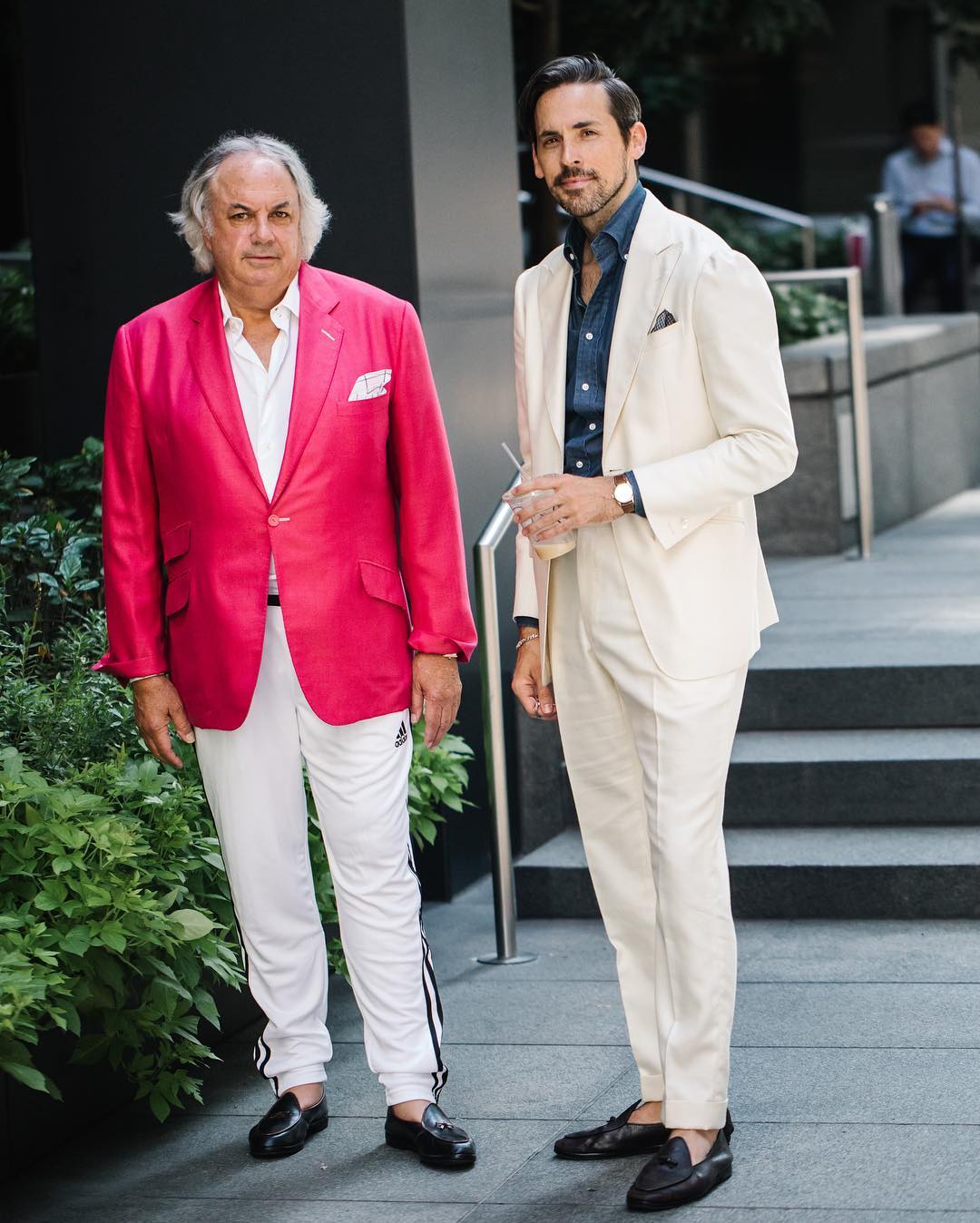
Alan, something you have championed your whole career is comfort. Given this, what do you make of the rise of athleisure? You seem to be wearing a lot of track pants with blazers in photos, so I wonder, can athleisure be “elegant” or “stylish?”
ALAN: Yes, comfort is mandatory for me in everything I wear. One of the reasons so many men still reference the Duke of Windsor, Fred Astaire, or Gary Cooper as paragons of men’s stylishness is that they all looked utterly comfortable in whatever they put on. Clothes that bind or constrict prevent the wearer from looking natural and relaxed, and thus he comes off stiff, falling short of his best. Too many men are still caught up with donning clothes cut as if they were a second skin, with the inevitable result that the clothes appear to be wearing them rather than the proper way around.
As for the more eclectic approach of athleisure, meaning combining two or more fashion genres in one outfit, that’s a quickly evolving dressing paradigm that’s about to have its day in the sun. After spending almost a year lounging in front of their computer attired in basically dressed-up pajamas, what a man decides to wear once the world reopens up is going to be influenced by the past year’s imposed indolence. Comfort in menswear has been the one dynamic to consistently transcend fashion. However, such an indulgence is a very slippery slope. Once a man gets accustomed to such freedom, getting them to give up such comfortable clothes can be like trying to put a genie back into a bottle.
Having just written a book about the man who invented eclectic dressing, Ralph Lauren, the most sophisticated blades primarily dress for themselves. They’ve long pushed the boundaries of creative expression. And yes, I have always mixed different kinds of clothes to create a personal, if not unorthodox, dressing style. But for me, all of my fashion explorations must ultimately provide maximum comfort and physical pleasure. I like elastic waistband pants, knitted sport shirts, soft and lightweight layers of vests, or woven-looking knitted outwear. It’s all about relaxed elegance, which can only come, as referenced earlier, from within. But I’m here to proclaim, assuming anyone is interested, that soft layered dressing is going to be in the driver’s seat for the foreseeable future.
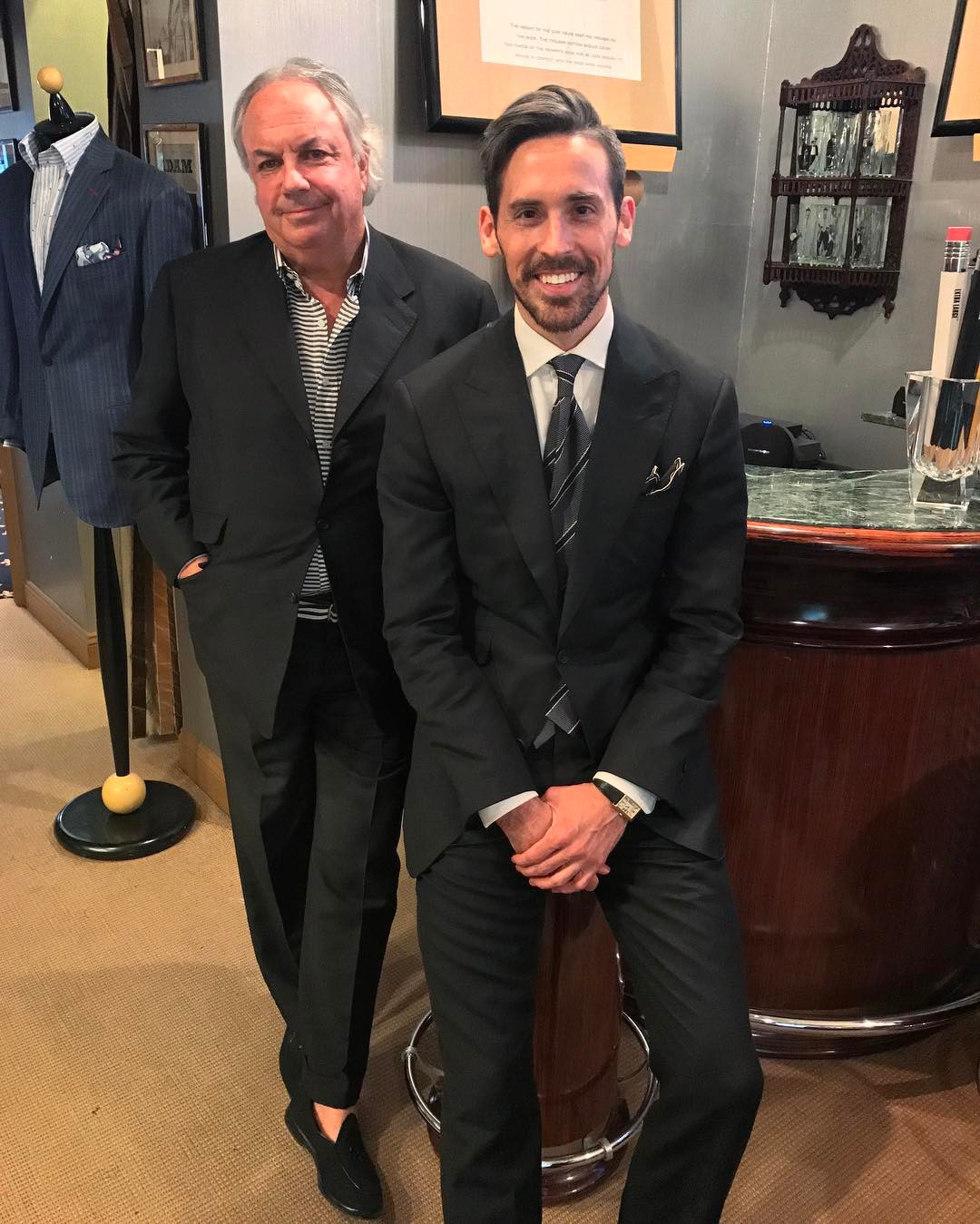
For many years in my small world of like-thinking boulevardiers, I’ve heard the hooves of fashion’s future getting louder, which, once the world finally takes off its face mask, will stampede every which way. I would not be surprised to find mini-earthquakes of pent-up personal creativity and expression erupting all over the globe, which may very well knock traditional and designer menswear on its ear for some time until they catch up with this crisscrossing, dressing-down fashion tsunami. My final recommendation is that your readers get their own copy of the ‘70s fashion bible Cheap Chic, because like much of its advice, the times, they are a-changing.
Some fashion pundits and menswear commentators have argued that COVID-19 has marked the triumph of athleisure and the downfall of classical business wear. There have even been arguments recently to do away with the suit and tie for good. What do you make of these claims?
JONATHAN: Even a year into this, people are still mainly wearing comfortable clothes at home. When I chat with my clients, I always ask what they wear most days, and barring a few dandies, the most common response is some form of chinos/ sweats/ track pants and a knitted top. I certainly recognize that there is this new level of expected comfort. Accordingly, we’ve focused on developing extremely comfortable pieces, a bit more casual than a classic sports jacket, yet still quite elegant. It’s to our advantage that our clothes have always been very soft and comfortable, so we don’t have to try to get folks into strong structured clothing.
I firmly believe that people who know what good tailored clothing looks and feels like are already eager to dress up again. After a long-time wearing track pants and a t-shirt, it’s a revelation to put on a great outfit and feel good about how you look when you go out. Often these days at the shop, I’ll be wearing something I feel great in, and then I’ll be bummed at the end of the day because there’s nowhere else to go. So, I feel strongly that folks will be glad to fold up their athleisure for a while and put on something that makes them feel good about themselves.
Last question, Jonathan, do you see your ownership of Alan Flusser Custom marking a continuity or discontinuity?
JONATHAN: I don’t see it in quite such black and white terms. The business will always be rooted in our core principles of good taste, proper proportion, the right colors for the individual, and comfort in the clothes. In that regard, it’s an important sense of continuity. My particular tastes will likely become a little more apparent in the seasons to come, but while things are sure to shift in subtle ways, the brand will remain rooted in what Alan has been advising for decades.
(photos via Alan Flusser and Christopher Fenimore)
